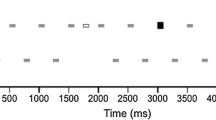Abstract
Although physiologically-indicative signals can be acquired in low-power biomedical sensors, their accurate analysis imposes several challenges. Data-driven techniques, based on supervised machine-learning methods provide powerful capabilities for potentially overcoming these, but the computational energy is typically too severe for low-power devices. We present a formulation for the kernel function of a support-vector machine classifier that can substantially reduce the real-time computations involved. The formulation applies to kernel functions employing polynomial transformations. Using two representative biomedical applications (EEG-based seizure detection and ECG-based arrhythmia detection) employing clinical patient data, we show that the polynomial transformation yields accuracy performance comparable to the most powerful available transformation (i.e., the radial-basis function), and the proposed formulation reduces the energy by over 2500× in the arrhythmia detector and 9.3-198× in the seizure detector (depending on the patient).










Similar content being viewed by others
References
Yazicioglu, R. F., et al. (2007). A 60 μW 60 nV\(/\;\sqrt[]{Hz}\) readout front-end for portable biopotential acquisition systems. IEEE Journal of Solid-State Circuits, 42(5), 1100–1110.
Verma, N., et al. (2010). A micro-power EEG acquisition SoC with integrated feature extraction processor for a chronic seizure detection system. IEEE Journal of Solid-State Circuits, 45,(4), 804–816.
Denison, T., et al. (2007). 2 μW 100 nV\(/\;\sqrt[]{Hz}\) chopper-stabilized instrumentation amplifier for chronic measurement of neural field potentials. IEEE Journal of Solid-State Circuits, 42(12), 2934–2945.
Verma, N., et al. (2011). Data-driven approaches for computation in intelligent biomedical devices: a case study of EEG monitoring for chronic seizure detection. Journal of Low Power Electronics and Applications, 1(1), 150–174.
Schachter, S. C. (1998). Vagus nerve stimulator. Epilepsia, 39, 677–686.
Csavoy, A., et al. (2009). Creating support circuits for the nervous system: considerations for “brain-machine” interfacing. In VLSI circuits, 2009 symposium on (pp. 4–7).
Dishman, E. (2004). Inventing wellness systems for aging in place. IEEE Computer, 37, 34–41.
Shoaib, M., et al. (2011). A low-energy computation platform for data-driven biomedical monitoring algorithms. DAC (pp. 591–596).
Hau, D., & Coiera, E. (1994). Learning qualitative models from physiological signals (Vol. SS-94-01, pp. 67–71). AAAI Technical Report, Menlo Park, CA, U.S.A., AAAI Press.
Lucas, P. (2004). Bayesian analysis, pattern analysis and data mining in health care. Current Opinion in Critical Care, 10(5), 399–403.
Chandrakasan, A., et al. (2008). Ultralow-power electronics for biomedical applications. Annual Review of Biomedical Engineering, 10, 247–274.
Vapnik, V. N. (1995). The nature of statistical learning theory. New York: Springer.
Christianini, N., & Shawe-Taylor, J. (2000). An introduction to support vector machines and other kernel-based learning methods. Cambridge, U.K.: Cambridge University Press.
Hsu, C. W., & Lin, C. J. (2002). A comparison of methods for multiclass support vector machines. IEEE Transactions on Neural Networks, 13, 415–425.
de Chazal, P., et al. (2004). Automatic classification of heartbeats using ECG morphology and heartbeat interval features. IEEE Transactions on Biomedical Engineering, 51(7), 1196–1206.
Shoeb, A., & Guttag, J.(2010). Application of machine learning to epileptic seizure detection. In Proc. of int. conf. on machine learning.
Eriksson, J., & Finne, N. MSPsim. Swedish Institute of Computer Science. http://www.sics.se/project/mspsim.
Shih, E., & Guttag, J. (2008). Reducing energy consumption of multi-channel mobile medical monitoring algorithms. In Proceedings of the second international workshop on systems and networking support for healthcare and assisted living environments.
Glassman, E., & Guttag, J. (2006). Reducing the number of channels for an ambulatory patient-specific EEG-based epileptic seizure detector by applying recursive feature elimination. In Proc. of the 28th IEEE EMBS annual international conference (pp. 2175–2178).
Kung, S. Y., et al. (2010). Feature selection for genomic signal processing: Unsupervised, supervised, and self-supervised scenarios. Journal of Signal Processing Systems, 61(1), 3–20.
Shoeb, A., et al. (2009). A micropower support vector machine based seizure detection architecture for embedded medical devices. In Proc. IEEE eng. med. biol. soc. conf. (pp. 4202–4205).
Shoeb, A. (2009). Application of machine learning to epileptic seizure onset detection and treatment. Ph.D. Thesis, MIT.
Joachims, T. SVM Light. University of Dortmund. http://www.cs.cornell.edu/People/tj/svm_light.
Goldberger, A. L., et al. (2000). PhysioBank, PhysioToolkit, and PhysioNet: Components of a new research resource for complex physiological signals. Circulation, 101(23), e215–e220.
Author information
Authors and Affiliations
Corresponding author
Additional information
The authors thank Dr. A. Shoeb (MGH, MIT, now with WeatherBill) for valuable discussions and algorithm testing support. They also acknowledge the support of the Gigascale Systems Research Center, one of six research centers funded under the Focus Center Research Program (FCRP), a Semiconductor Research Corporation entity.
Rights and permissions
About this article
Cite this article
Lee, K.H., Kung, SY. & Verma, N. Low-energy Formulations of Support Vector Machine Kernel Functions for Biomedical Sensor Applications. J Sign Process Syst 69, 339–349 (2012). https://doi.org/10.1007/s11265-012-0672-8
Received:
Revised:
Accepted:
Published:
Issue Date:
DOI: https://doi.org/10.1007/s11265-012-0672-8




